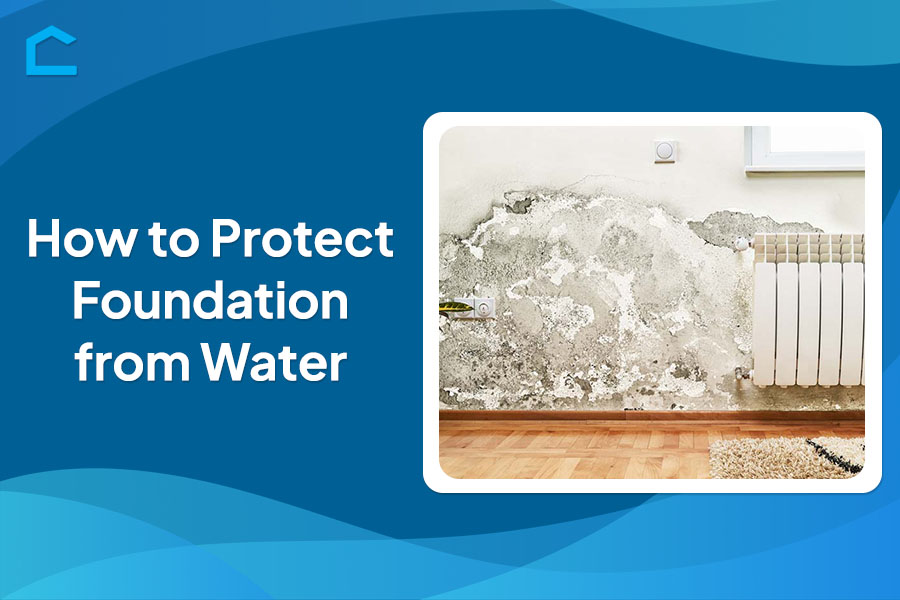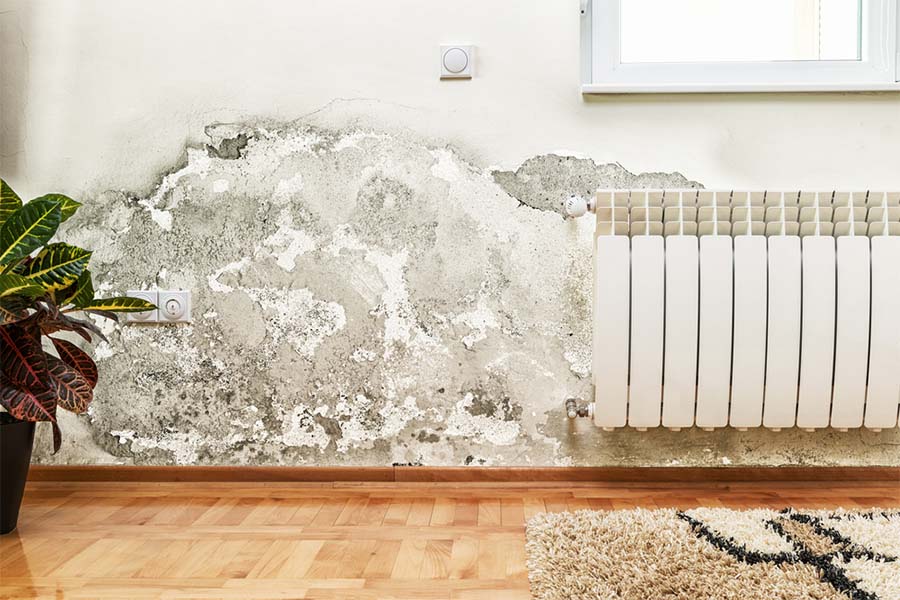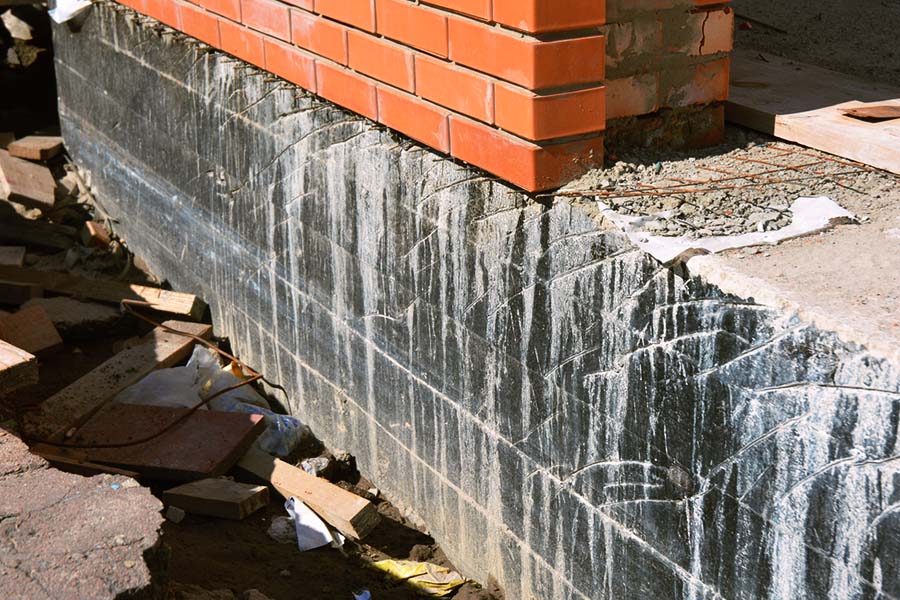How to Protect Foundation From Water

The foundation is your home’s backbone, providing stability and support. However, water damage can undermine its integrity, leading to costly repairs and potential safety hazards. Knowing how to protect foundation from water involves a combination of preventive measures.
In this guide, we’ll explore various strategies and techniques to safeguard your foundation against the damaging effects of water. We’ll cover essential steps to keep your foundation dry and secure.
We’ll also discuss the importance of regular maintenance and inspections to identify and address potential water-related issues before they escalate. Let’s start!

Source: shutterstock.com / Photo Contributor: wabeno
How to Protect Foundation From Water
Water can seep into the foundation through cracks, poorly designed drainage systems, or inadequate grading, leading to erosion and weakening of the structure. You can ensure your foundation remains strong and dry by implementing the following measures:
Proper drainage system
Having a well-designed and functional drainage system is crucial for protecting your home’s foundation from water damage. Properly installed gutters and downspouts play a vital role by catching rainfall from the roof and directing it several feet away from the foundation. This ensures effective drainage and prevents water from pooling around the base.
In addition to gutters, you can use French drains to enhance your drainage system. These gravel-filled trenches collect surface and groundwater, redirecting it away from vulnerable areas like the foundation.
We advise you to regularly inspect drainage systems and clear any clogs or obstructions. Consider installing extensions on downspouts to carry water even further from your home’s perimeter.
Grading and landscaping
To ensure your home’s foundation stays protected, start by grading the soil around your house so that it slopes away from the foundation. This gentle slope directs water away from the base of your home. You can also use landscaping strategically to manage water flow effectively.
Place plants, rocks, and other landscaping features to control where runoff goes. But be cautious about planting large trees or shrubs too close to the foundation, as their roots may cause cracks over time. Incorporating gravel beds or dry creek beds into your landscaping enhances aesthetics and helps with drainage.
You should regularly inspect the grading and adjust the soil as necessary to maintain proper slopes. If needed, consider installing catch basins or drains in low-lying areas to collect excess runoff.

Source: shutterstock.com / Photo Contributor: Hannamariah
Sump pump installation
A sump pump is crucial if you have a basement or crawl space. It prevents water buildup that can threaten your home’s foundation. It works by collecting excess moisture and pumping it away.
For best results, we recommend placing the sump pump in the lowest area of your basement or crawl space. Ensure there’s a well-constructed pit and drainage tiles.
Connecting the pump to a backup battery or generator ensures it keeps working, especially during power outages. This setup prevents flooding, even when electricity is out. However, you need to remember to test the sump pump regularly and replace it every five to seven years.
How to Seal Foundation From Water
Sealing your home’s foundation from water is essential to prevent structural damage and moisture issues. We outlined the key steps and techniques to ensure your foundation remains dry and secure. Here is what you should do:
Sealing cracks in the foundation
One of the first steps to waterproof your home’s foundation is to seal any existing cracks or gaps. Carefully inspect the foundation and locate areas that need repair. Use a wire brush to remove debris and loose material from the cracks.
Next, apply a concrete patching compound to seal the cracks. For bigger cracks, opt for a hydraulic cement product that expands as it cures, ensuring a tight seal. You must allow enough time for the patching material to fully cure before moving on to the next waterproofing steps.
Applying a waterproof coating
You can further waterproof foundation walls by applying a specialized waterproof coating. Start by cleaning the walls thoroughly to remove dirt, loose materials, and old coatings that might hinder adhesion.
You should follow the manufacturer’s instructions precisely for applying the coating. Use a brush or roller to apply thin, even layers, allowing each coat to dry completely before applying the next. We must mention that multiple coats are usually necessary for effective waterproofing.
Exterior waterproofing systems
For better protection against water intrusion, you should have a professional install an exterior waterproofing system. This system forms a barrier outside your foundation to stop moisture from seeping in. Options like membrane waterproofing or rigid insulation boards can be used.
Installing these systems involves excavating around the entire foundation. Drainage systems, such as gravel beds, are often included to redirect water away from the foundation walls.
After installing exterior waterproofing, it’s crucial to properly backfill and grade the soil around your home. These steps ensure effective drainage and maintain the integrity of the waterproofing membrane over time.

Source: shutterstock.com / Photo Contributor: Radovan1
Regular maintenance and inspection
Regular maintenance and inspection are essential to protect your foundation, regardless of your waterproofing method. You should routinely inspect the foundation’s interior and exterior for new cracks, signs of water seepage, or moisture damage.
It’s also important to keep your gutters and downspouts clear to ensure proper drainage away from your home. Additionally, ensure the surrounding soil is graded to slope away from the foundation.
We advise you to promptly address any drainage issues that arise. If you notice significant cracking, signs of structural problems, or other major damage to the foundation, it’s advisable to seek a professional inspection.
Conclusion
Knowing how to protect foundation from water requires a multi-faceted approach. This includes proper drainage, effective waterproofing methods, and regular maintenance. Implementing solutions like functional drainage systems and strategic landscaping also creates a formidable defense against moisture intrusion.
However, the battle is not won without vigilance when it comes to protecting the foundation from water damage. Don’t hesitate to enlist professional expertise for significant damage or comprehensive waterproofing solutions.
